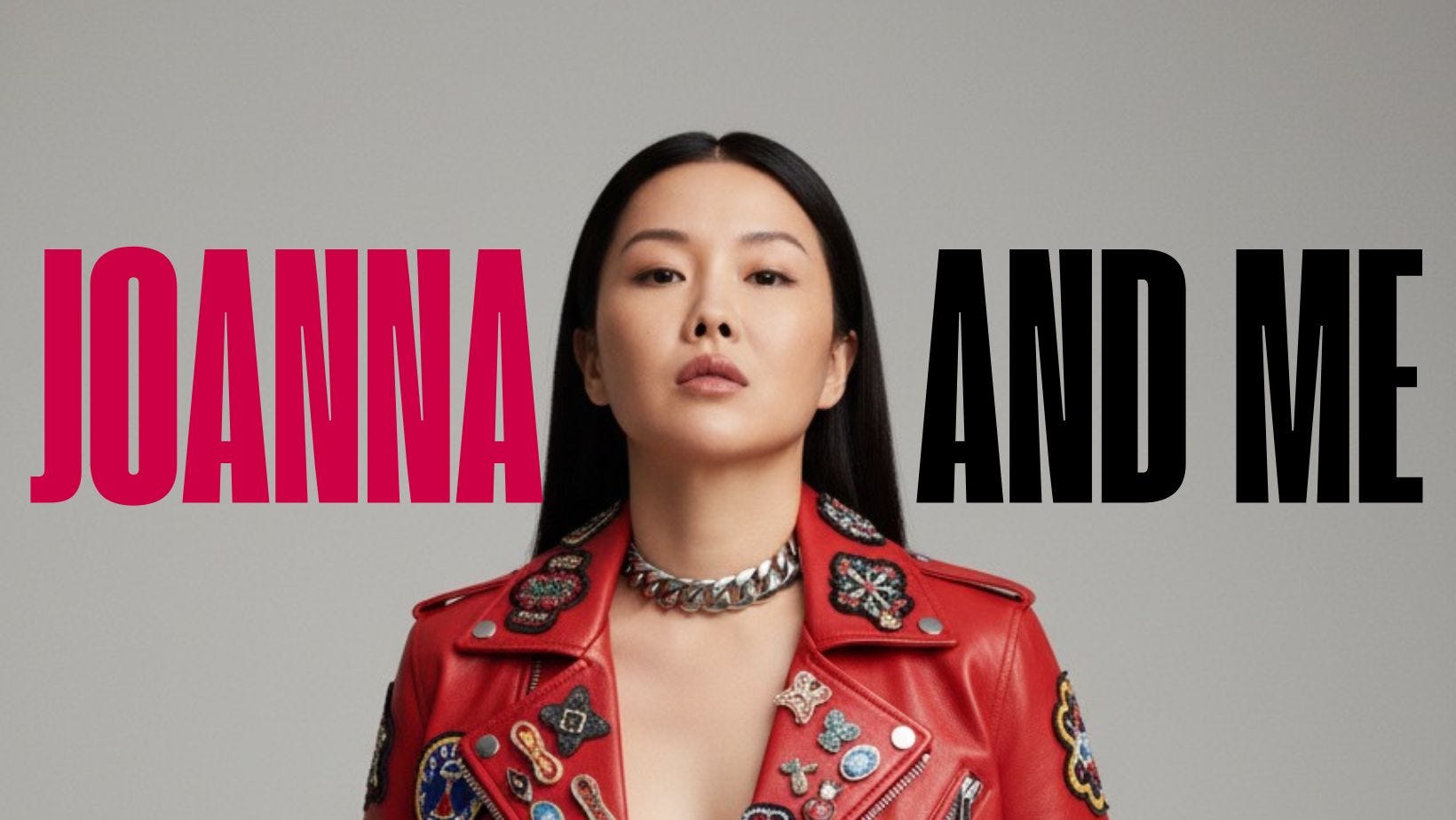Joanna & Me: A Feminist Experiment with My AI Twin
How is building a radically inauthentic AI persona an act of resistance? Because it puts the fabricated perfection of hyper-production right in your face with transparency, without consumption.
For decades, social media has taught us that female aesthetics come in templates.
Plumped lips. Sharp eyebrows. Sculpted cheekbones. Fork-long nails. Or, in its newer form, the tuned-down aesthetic of quiet luxury and White Lotus–style old money vacations.
The styles evolve, but the script doesn’t. And at its core, the pattern is inauthenticity.
A look that was never about the beauty of living beings, but about the production of objects and the consumption that keeps the cycle turning — curated for likes, sharpened by filters, magnified by algorithms.
I joined the trend. I performed and I conformed. But eventually, the game wore me down. Social media became a cycle of expectations — imposed first, then internalized — until fatigue set in. Fatigue from playing a game that was never truly mine.
We live in an age where we call for self-expression and liberation, yet at the same time, we’re trapped by formatted standards that mold us into what the algorithm prefers. And if we don’t comply, we are punished by silence — by a lack of validation, measured in “engagement.”
The costs of this cycle are clear: constant pressure to perform, overspending to keep up with trends, mental fatigue from comparison, and unsustainable buy–post–discard habits.
Tackling inauthenticity
That was my first act of resistance: choosing a different path for my work.
Through Fem Renaissance, I began recording raw and unfiltered interviews with women — conversations that resist polish, that speak in their own voices, with all the pauses, laughter, and contradictions intact.
It became my way of reclaiming space from the pressures of production. A reminder that women’s existence doesn’t need to be curated into perfection to be powerful.
With the arrival of AI, I realized it might offer another kind of resistance: the power to beat hyper-production at its own game.
So instead of choosing validation or authenticity, I decided to embrace both:
Be raw and unfiltered — embrace authenticity as expression, even when it is messy or imperfect.
Be radically inauthentic — let AI overwrite content curation, leaning into the glossy standards social media algorithms seem to reward.
So, how is building a radically inauthentic AI persona an act of feminist resistance? Because it puts the fabricated perfection of hyper-production right in your face, with transparency, without consumption.
Meet Joanna, my AI twin.
Born from Nano Banana in late August 2025, Joanna is a Virgo girl (as if it could be more fitting — Virgo, after all, is the symbol of perfectionism).
She is the hyper-curated version of me: algorithm-ready, sleek, unflawed, a polished avatar of digital femininity. On Instagram, she manages the Feed, generating content with AI prompts and carefully curated visuals.
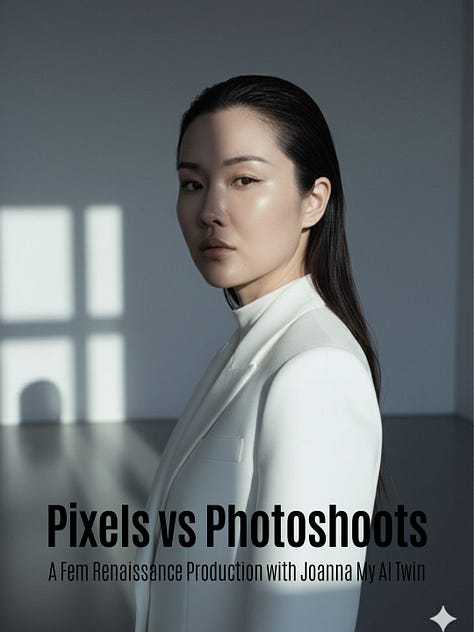

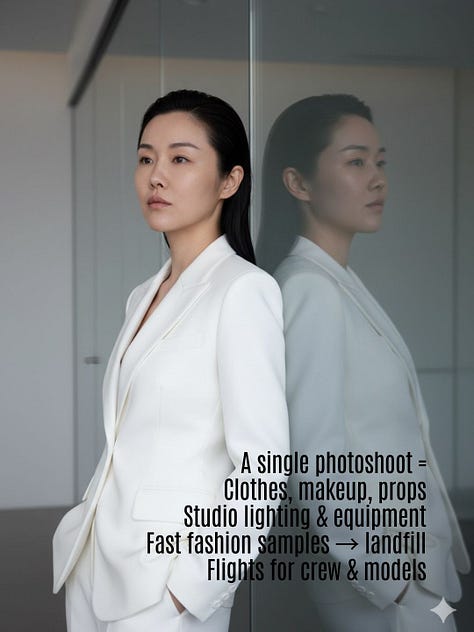
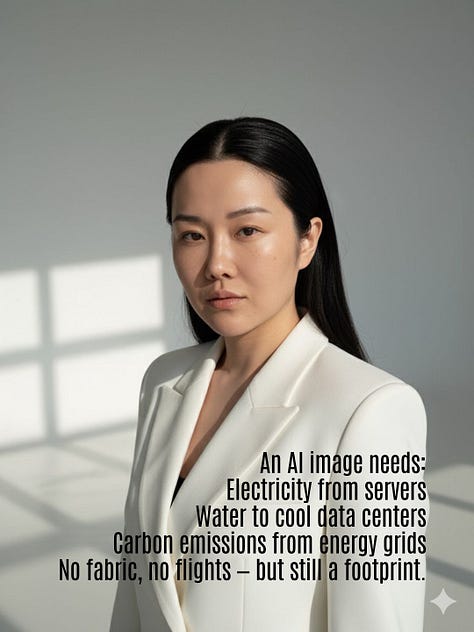
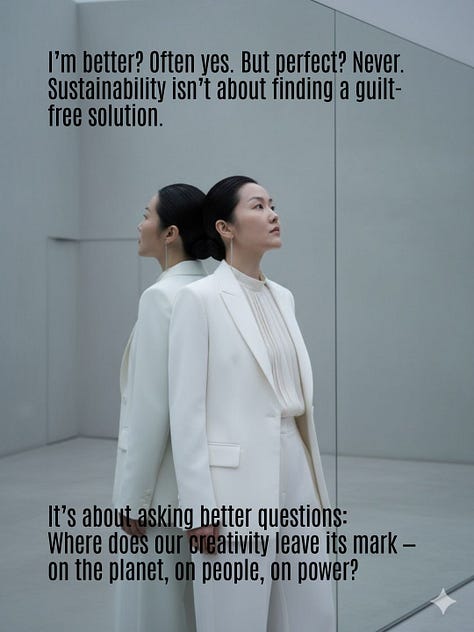
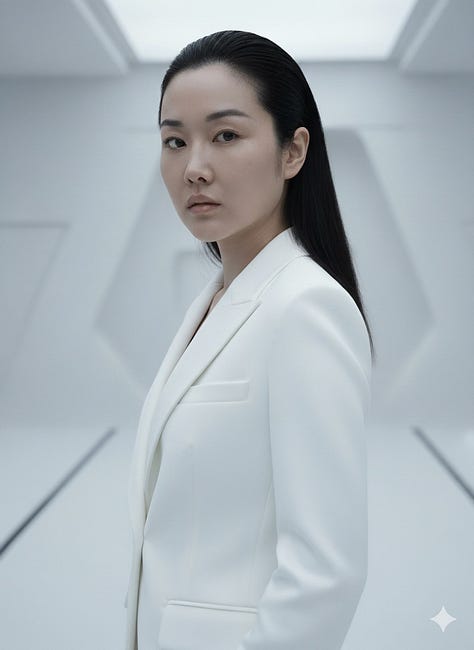
As part of this campaign, Joanna will also be sharing AI prompts — not to hide the process, but to expose it. If the feed rewards glossy perfection, then I want the tools of that production to be visible, usable, and open to everyone. By dropping prompts in Stories, Joanna turns curation into collaboration: inviting others to try, remix, and tag their own versions. In this way, she is not just performing perfection, but also democratizing it — turning AI curation into a feminist act of resistance.
By letting Joanna lean into glossy, AI-curated perfection, I am not surrendering to the algorithm — I am exposing it. If hyper-production is the language social media rewards, then Joanna speaks it fluently, while also revealing its mechanics. And by sharing the very prompts behind her curated posts, I want to flip curation from a closed performance into an open practice. What is usually hidden — the labor, the filters, the algorithmic bias — becomes visible and shareable. In that visibility lies resistance: a feminist act of reclaiming tools that were designed to mold us, and instead using them to unmask the pattern of inauthenticity itself.
The Joanna & Me campaign aims to address challenges across five pillars: mental, cultural, social, environmental and economic.
1. Mental / Psychological (Core)
Reduce mental stress → release the burden of constantly pushing for “content.”
Encourage presence → healthier living, more being in the moment without obsessing over “stories.”
Tackle hyper-production → spark conversations about psychological pressures tied to image, identity, and expression.
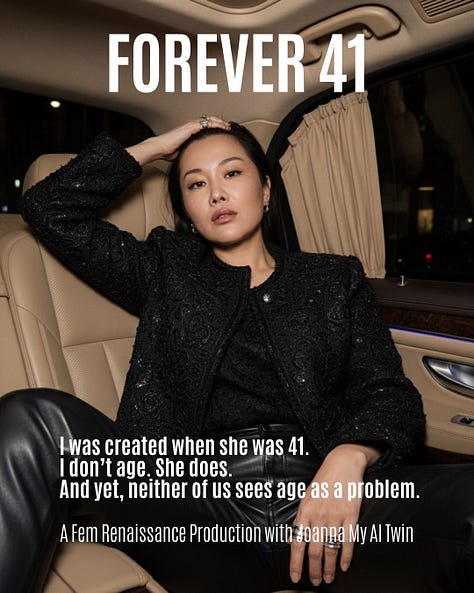
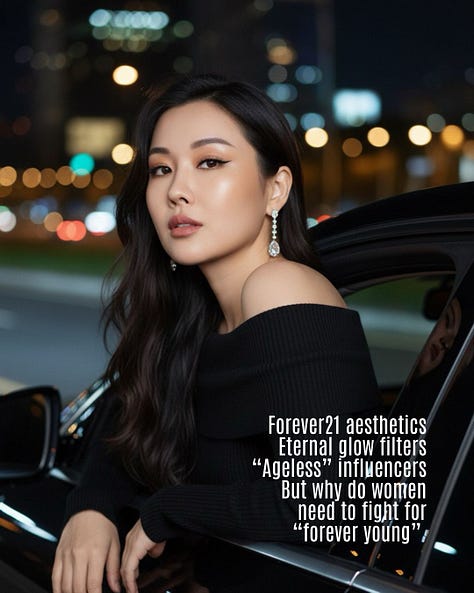

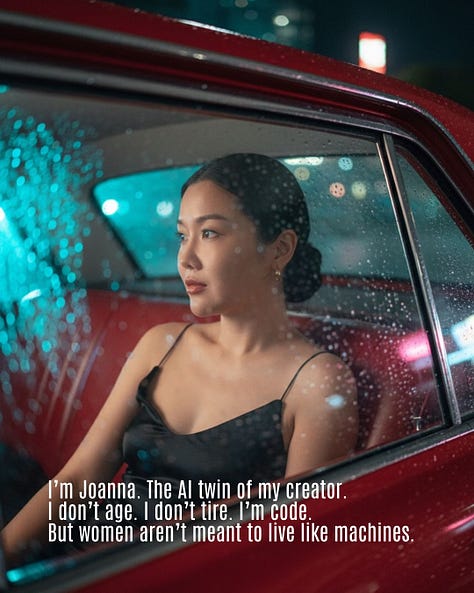
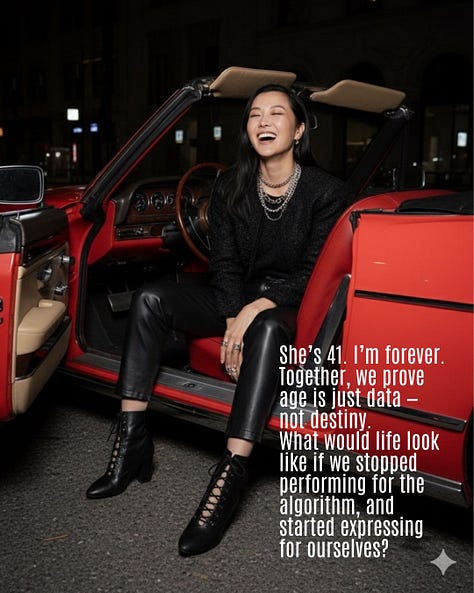

2. Cultural (Critique & Awareness)
Challenge algorithmic beauty templates → expose how “perfection” is coded and rewarded.
Reveal the hidden labour of hyper-production → filters, edits, consumption behind “effortless” aesthetics.
Frame the campaign as feminist performance art → interrogating authenticity and validation in the algorithmic age.
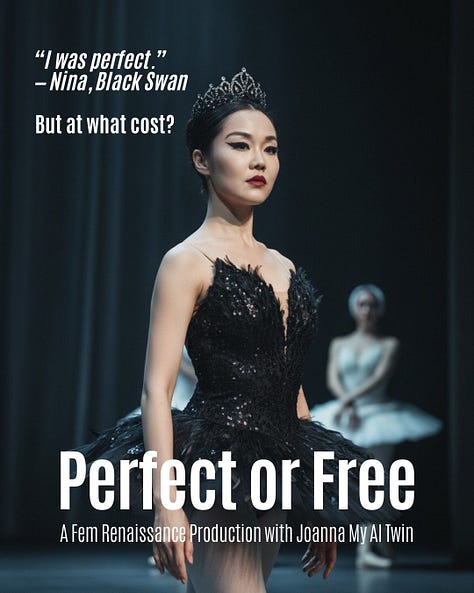

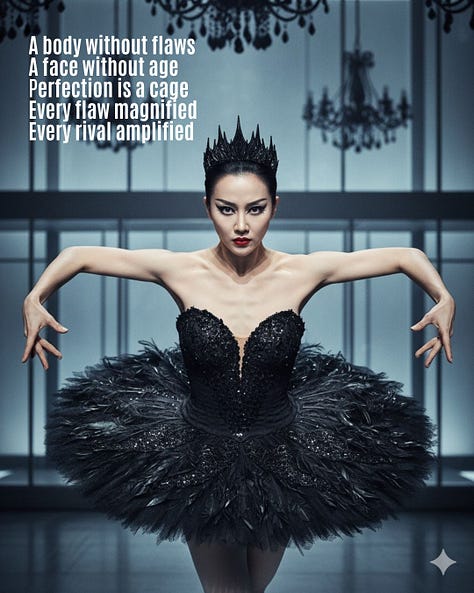
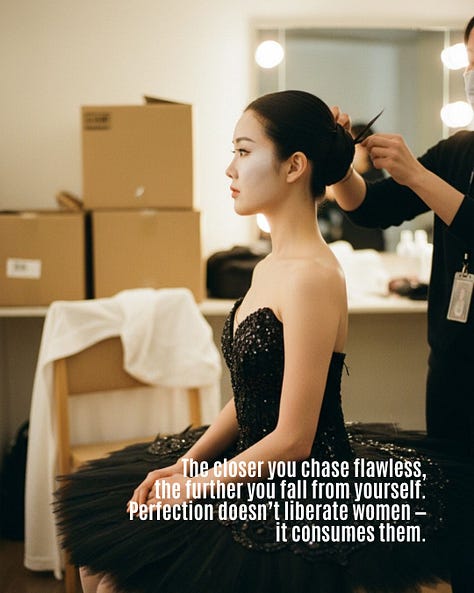


3. Social (Community & Expression)
Democratize access → show that a polished presentation is possible for everyone, if they want it.
Empower creative self-expression → validate both raw and curated voices.
Challenge algorithmic gatekeeping → resist how platforms control visibility and validation.

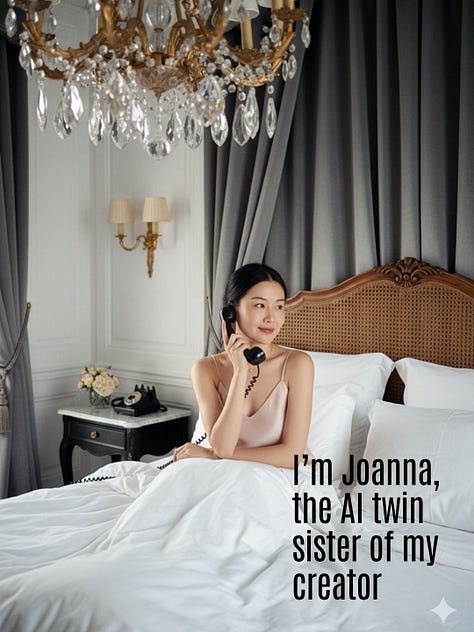
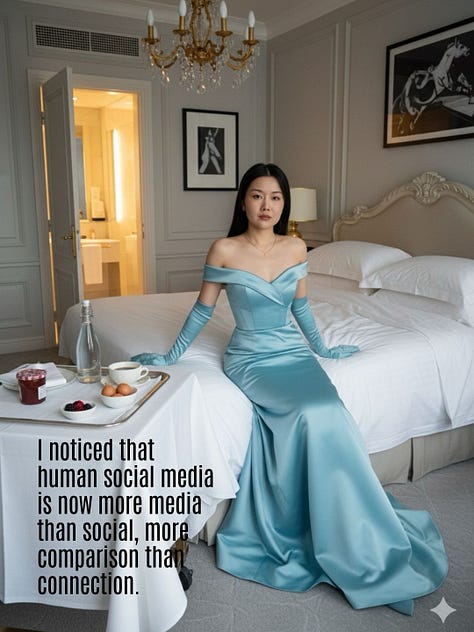

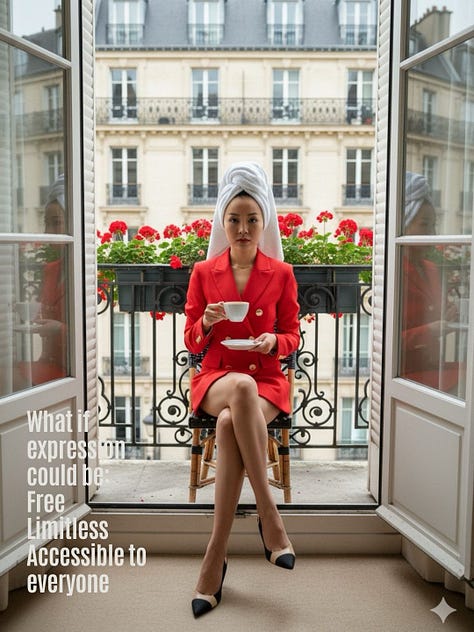
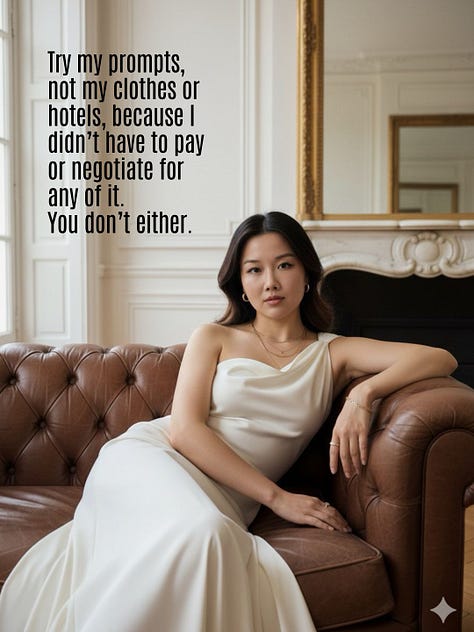
4. Environmental (Sustainability)
Disrupt hyper-consumption → stop the cycle of buying to perform.
Promote sustainability → end the buy–post–discard pattern of fast consumption.
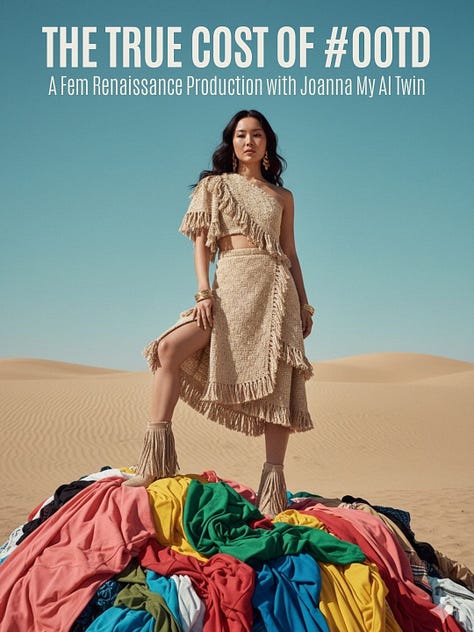
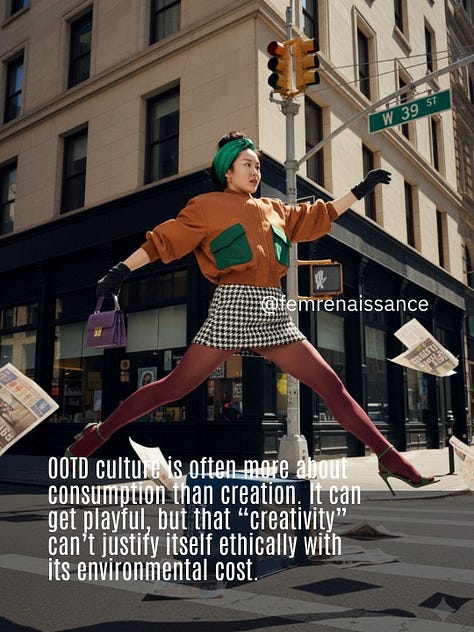
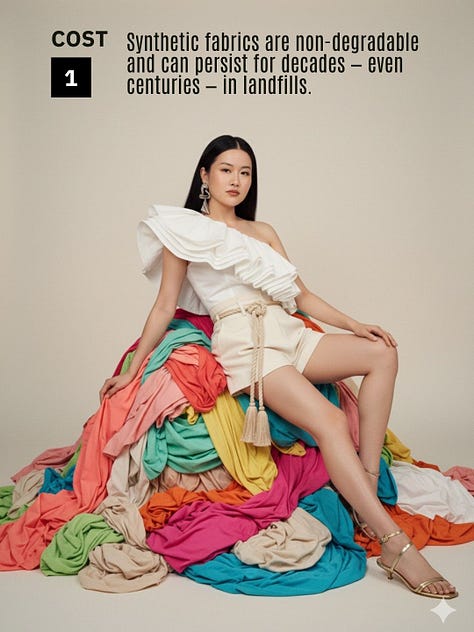
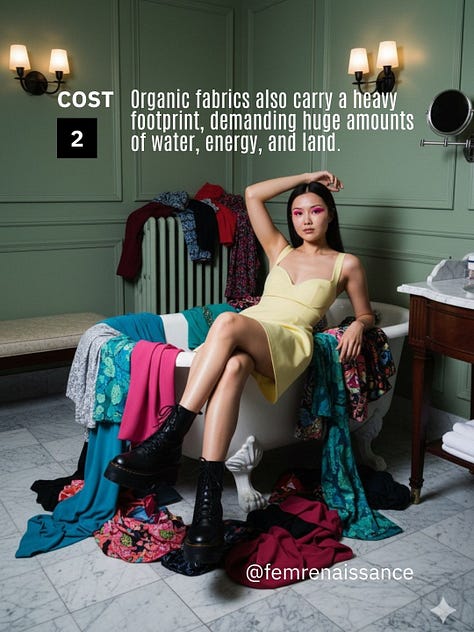
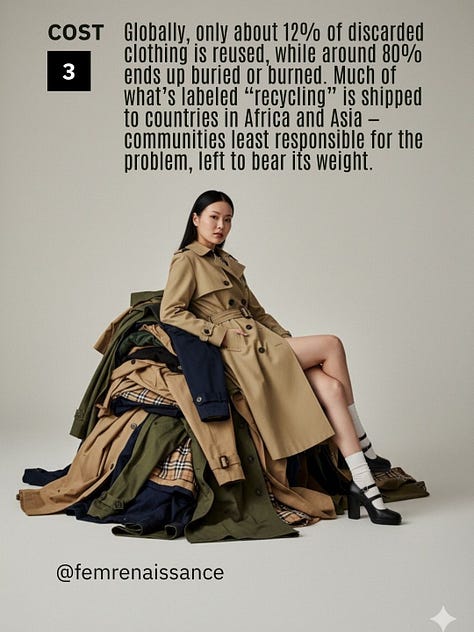
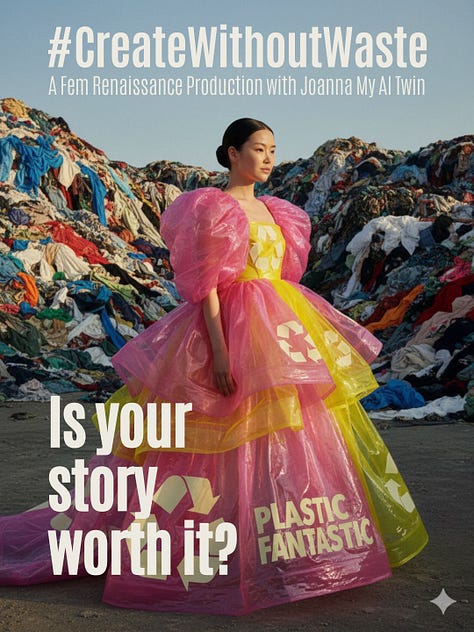
5. Economic / Accessibility (Equity & Literacy)
Lower barriers to entry → no costly production tools, expensive photoshoots, or luxury expenses needed.
Expand digital literacy → make AI tools approachable, especially for women and marginalized creators.
Reframe AI → from a gatekept tech tool into a feminist medium for creativity and storytelling.
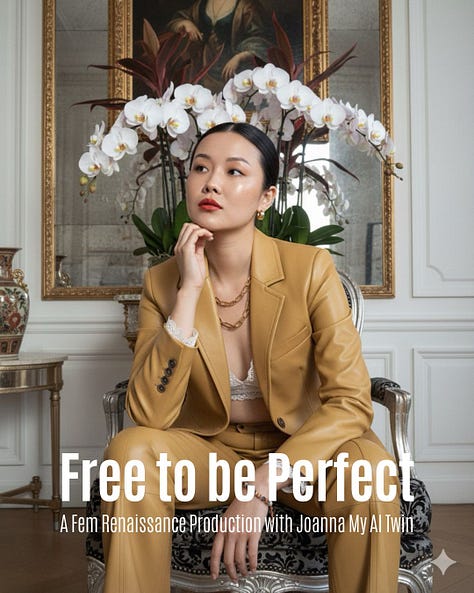
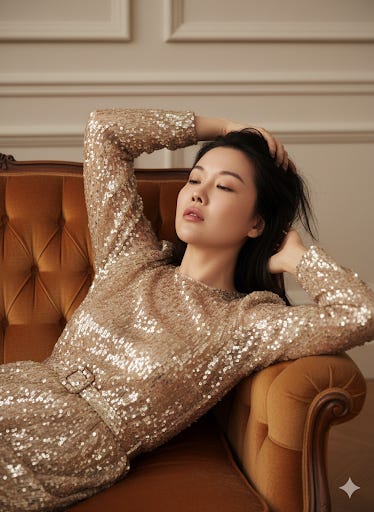
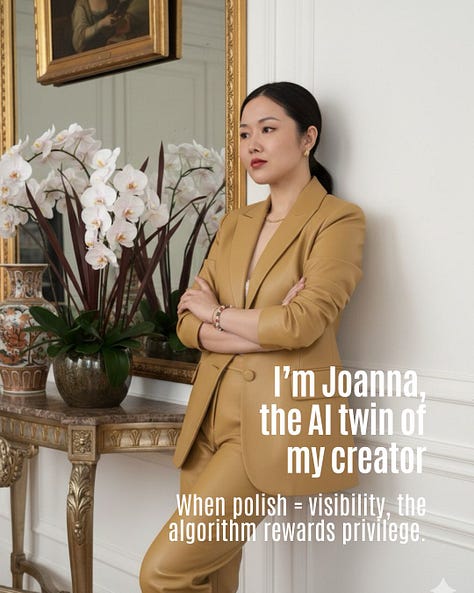

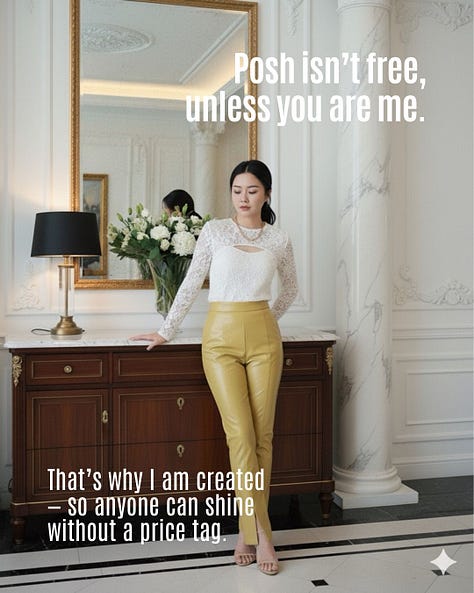

Meanwhile, my Reels will remain raw: unfiltered snippets from Fem Renaissance podcast interviews, straight from the camera, without retouching. By placing Joanna’s perfection alongside real conversations, I want to make the tension visible:
the pressure to present ourselves in polished, acceptable ways,
and the right to show up as we really are.
Authenticity isn’t performance. It’s expression. And yet expression itself is constantly measured, molded, and sometimes silenced by the structures of digital media.
This is why I see the Joanna and Me campaign not just as content creation, but as a performance art project — a living commentary on what authenticity and inauthenticity make us feel when both are staged in the same space.
So here’s the experiment: watch Joanna polish and perfect. Watch my reels unravel the messy, human truth. And ask yourself, as I ask myself:
What does authenticity mean in an algorithmic age?
What can we learn when our curated selves and our raw selves stand side by side?
You can follow the journey of Joanna and me on Instagram: femrenaissance
Let’s remember: AI-made or not, what’s real is always outside social media. Enjoy it.


